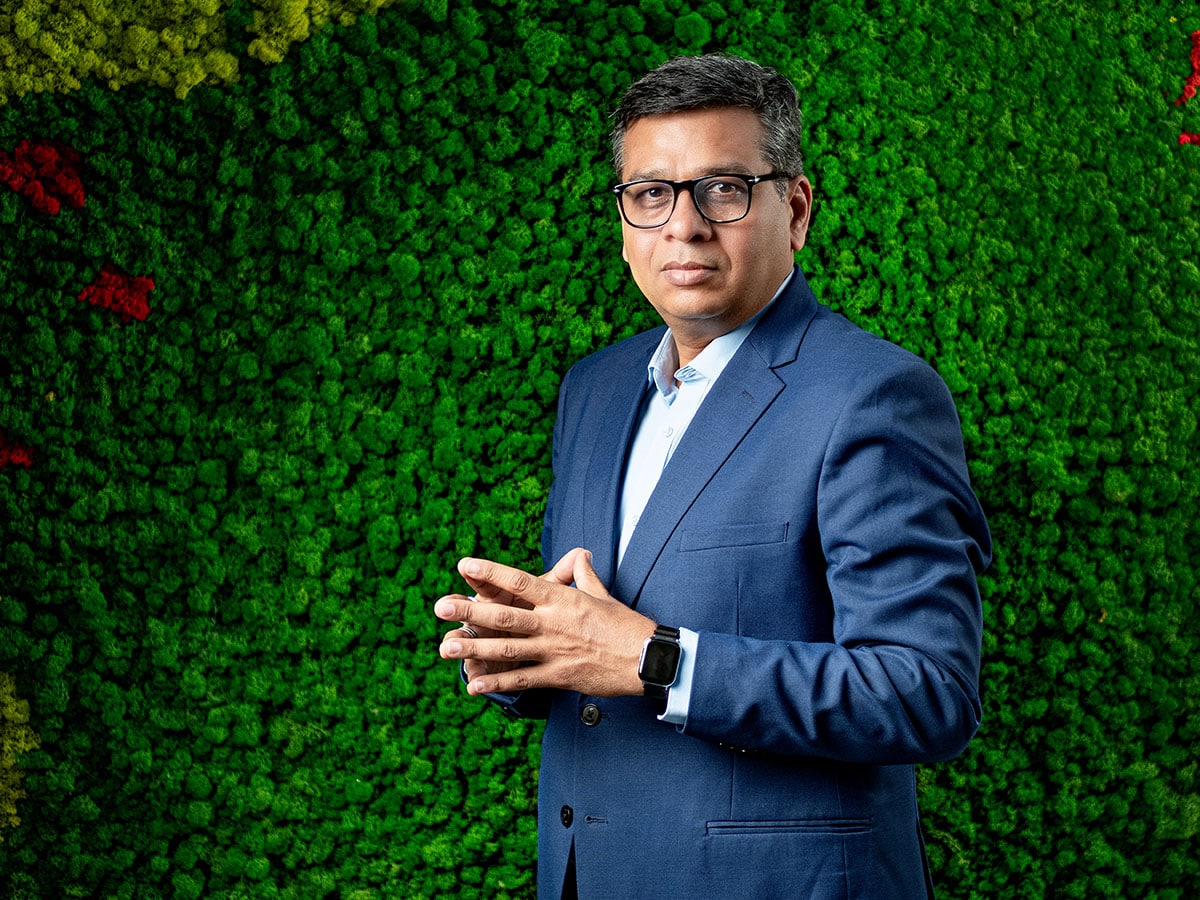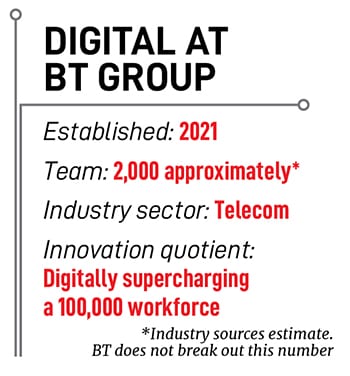A digital unit, a part of the operation he oversees, was formed about three years ago and over that time he’s led multiple “transformations” of IT systems—an important one for the finance function has just concluded—for his corporate colleagues, some 14,000 of whom are in India alone.
Some of these overhauls have been in partnership with software providers such as SAP, best known for its ERP or enterprise resource planning business management software, Salesforce, the world’s biggest provider of cloud software for CRM or customer resource management, and ServiceNow, a large vendor of IT service management (ITSM) cloud software.
BT does not break out specific team numbers, but sources in the industry estimate the digital unit to be as big as 2,000 specialists.
Of the three areas that Doshi is responsible for, the ERP work basically comprises modernising IT systems for functions such as finance, supply chain, payroll, learning, legal, regulatory compliance and so on. Then he’s leading a “billing transformation”, which is about changing the billing experience for BT’s telecom consumers.
And finally there’s the digital workplace transformation, which involves the devices people use at work, how they collaborate, remote access security, office technology, or “everything that makes a colleague productive from the time she comes to the company to the time you become an alumni of the company”, he says.
One should also see Doshi’s work in the context of how BT Group, which traces its history back to 178 years, is changing today. On the one hand, it has a heritage of innovation, he says, but the flip side is of course, in the modern era, there are legacy computer applications.
“That’s where we created our platform vision so that we have a single platform with an API and we can build services on top.”
Also read: We now own a next-gen roadmap core: AMD’s Jaya Jagadish
Doshi and his team had to start with what are considered table stakes today, such as single sign-on for various applications. Then followed making billing a better experience for customers and internally, generating payslips that reflected the capabilities of modern smartphones.
Some 85,000 BT employees in the UK have been migrated to a single system, over a period of 16 months. And with ServiceNow, 56 different processes for getting various problems fixed have been moved to a single standard process.
The company’s legacy HR system was migrated to SAP’s Success Factors in the same 16 months, and some 118 different processes were re-engineered, “like an absolute clean slate”, he says, “because there’s no point in deploying a modern platform without the matching processes”.
This all wasn’t simply about ripping out the old and putting in new tech, he says. That way, it would have been a failure. The whole exercise needed a tight coupling between teams across the world, but more so between the digital team and the HR team, “delivering effective change management with empathy for 100,000 colleagues”, he says.
Doshi hasn’t missed the opportunity to tap generative AI either. For example, applying it to case notes generation reduced the time needed for that task by 50 percent, he says. Further, it also resulted in reduction by a third in what’s called mean time to resolution of the corresponding issues.

In the software domain, using Amazon Q, an AI assistant, software developers were accepting as much as 36 percent of the code suggestions the AI assistant was making.
In the foreseeable future, Doshi’s vision for how AI will transform the modern workspace is that it will free up people to focus on what they really need to. Consider a simple example: Say an employee takes some personal time off. She only needs to make that one entry in the system, and a combination of AI assistants and automation will take care of the rest—rerouting her responsibilities automatically to others on the team with the same access and so on.
Achieving this means not only attracting the right talent, but also figuring out what to equip that talent with, by way of AI tools and so on, he says.
Teams will be more close knit and their compositions will change to include a more diverse set of formal skills, but also perspectives and less-tangible capabilities. Some of that has already happened, he points out, with teams going from a group of software engineers to ones that include UI/UX specialists, data scientists and statisticians, change management specialists and so on.
“It’s going to be an intense time to be a CIO… what can I say, ‘yeh dil maange more’,” he says.
 Jay Doshi, Managing director and CIO for corporate units at BT Group
Jay Doshi, Managing director and CIO for corporate units at BT Group
 “Anybody who has a bt.com email ID is my customer, wherever they are in the world,” Doshi likes to say.
“Anybody who has a bt.com email ID is my customer, wherever they are in the world,” Doshi likes to say.
